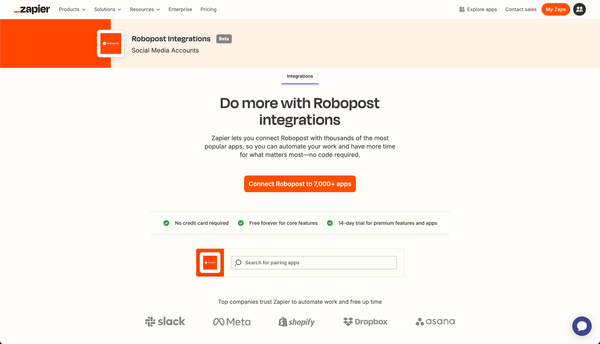The Evolution of Social Media Algorithms and What It Means for Marketers
Explore the dynamic shift in social media marketing, AI's role, and strategies for engaging modern audiences effectively.

Social media has undergone a major transformation. From the early days with the launch of Facebook to today’s focus on influencers and data-driven strategies, social media is now central to modern marketing. This article looks at how social media algorithms have evolved and what this means for marketers. It covers the impact of artificial intelligence, ongoing platform changes, new trends, and the shift towards creating lasting online communities.
Key Takeaways
- Social media platforms have changed marketing from traditional ads to focusing on influencer marketing, personalized content, and data analysis.
- Artificial intelligence is changing social media marketing by making it easier to personalize at scale, optimize ad campaigns, and improve customer interactions.
- New trends like augmented reality, virtual reality, and the demand for immersive experiences are changing how social media marketing strategies are developed.
- Marketers are now focusing more on creating active online communities outside of social media platforms to better engage with audiences and address issues related to data privacy and changing algorithms.
The Evolution of Social Media Marketing
From Facebook's Launch to Influencer Dominance
The launch of Facebook in 2004 was a major turning point for social media, changing it from a simple way to keep in touch with friends into a crucial marketing tool for businesses. It opened up new opportunities for companies to connect with customers and boost sales. With the introduction of Twitter, which focused on short messages, social media's global reach grew even wider. Instagram and LinkedIn then helped to increase the visibility of brands and professionals.
As social media platforms developed, they started to provide valuable consumer data, which made targeted advertising and data-driven marketing strategies possible. The shift to mobile devices improved the user experience and made social media a key part of everyday life and business operations. Influencer marketing, which uses popular individuals to promote brands, has become a major way for brands to engage with their audiences.
The table below shows the key milestones in the development of social media marketing:
Year | Platform | Milestone |
|---|---|---|
2004 | Launch of Facebook, introducing a new era in social media | |
2006 | Global conversations sparked by Twitter's microblogging feature | |
2010 | Visual storytelling takes center stage with Instagram | |
2013 | Professional networking and business marketing emphasized |
The path from Facebook's early days to today's focus on influencers shows how social media has constantly changed. Marketers need to use creativity, data analysis, and a good grasp of social media's evolution to succeed in this shifting environment.
The Shift from Traditional Advertising to Data-Driven Strategies
The move from traditional advertising to data-driven methods represents a major change in marketing. Advanced analytics tools now make it easier for marketers to access audience data, allowing them to make smarter decisions based on up-to-date information.
- Traditional advertising used broad, general campaigns.
- Data-driven methods enable precise targeting and personalized marketing.
- Real-time analytics help quickly adjust to market trends and consumer behavior.
This shift isn't just about gathering data; it's about using that data to create better, more engaging marketing campaigns. As we adopt these new methods, it's important to focus on data privacy and ethical practices to build trust with our audience.
The Rise of Mobile and Its Impact on User Experience
The widespread use of mobile devices has changed how social media works. Mobile platforms are now the main way people access social media, which has shifted how content is viewed and interacted with. Marketers need to adjust their strategies for small screens and touch interfaces on smartphones and tablets.
Since most social media traffic comes from mobile devices now, it's crucial to make sure content is optimized for mobile. Videos, especially, perform much better when designed for mobile viewing. Brands that use mobile-friendly video content can engage more effectively and reach their audience better.
For marketers in the mobile age, it's important to:
- Focus on creating a good user experience on mobile devices due to the small screen size
- Use detailed analytics to guide targeted advertising
- Use influencer marketing, which is more effective with mobile use
- Keep up with new technologies to improve personalization and create engaging experiences
The Role of Artificial Intelligence in Social Media
Personalization at Scale with AI
Personalization has become essential rather than optional in social media marketing. AI-powered tools use machine learning to analyze large amounts of data, allowing brands to create content and experiences tailored to individual users. This move toward personalization is driven by the growing demand for relevant and customized interactions.
- Data-Driven Insights: AI helps marketers predict what users will do, customize content, and deliver it at the best time.
- Enhanced Engagement: Personalized campaigns are more likely to connect with users, leading to higher engagement and loyalty.
- Conversion Optimization: Matching offers and messages to what users like can significantly increase conversion rates.
However, marketers need to address issues related to data quality and ethical use of AI to ensure responsible practices. The future of AI in marketing is expected to advance quickly, focusing on sustainable growth and customer satisfaction.
Optimizing Advertising Campaigns Using AI
Using AI tools in social media marketing is changing how advertising campaigns are run. Machine learning helps marketers adjust and improve their strategies in real-time, making campaigns more effective and cost-efficient. This approach allows for a more personalized experience that connects better with the target audience.
- Better targeting and personalization
- Gaining a competitive edge and saving costs
- Higher return on investment (ROI) for marketing efforts
AI can quickly analyze large amounts of data and spot trends, helping marketers make smart decisions fast. This boosts ROI and gives a competitive advantage by allowing for better use of resources and improving efficiency. For small and medium-sized businesses (SMEs), AI is especially useful because it helps engage customers effectively, even with limited marketing budgets.
Emerging Trends in Social Media Marketing
The Rise of Augmented and Virtual Reality
The use of Augmented Reality (AR) and Virtual Reality (VR) in social media is creating exciting new opportunities for marketers. AR tools, like filters and lenses, let users try on products or join branded games virtually. VR goes even further by placing users in fully digital worlds, which is great for storytelling and showing off products.
- AR lets users try products virtually and have interactive experiences.
- VR creates immersive environments for storytelling and demos.
As AR and VR technologies continue to develop, they will change how social media marketing works, making personalized and immersive experiences the new standard. Marketers need to keep up with these changes to stay competitive and relevant.
Adapting to Changes in Consumer Behavior
As digital trends change, so do what consumers expect and how they behave. Marketers need to stay flexible and update their strategies to keep up with these changes. Social media algorithms greatly affect how content is shared, and as technology and user needs evolve, these algorithms will keep influencing content distribution.
Personalization is crucial for connecting with consumers. By using data, marketers can customize experiences to fit individual preferences, which boosts customer loyalty and satisfaction. This approach needs ongoing adjustment based on real-time feedback.
Looking ahead, social media marketing will likely be shaped by the growing need for personalized and immersive experiences. Marketers must stay on top of market trends and consumer behavior to keep their campaigns relevant and effective.
Building Sustainable Online Communities Beyond Social Platforms
Navigating Data Privacy Concerns and Algorithm Changes
Data privacy and algorithm updates bring both challenges and chances for marketers. Following privacy laws is crucial not just for staying legal but for keeping consumer trust. Marketers need to keep up with rules, like those for SMS in New York State, to ensure their practices are ethical and compliant.
When using AI tools in marketing, it’s important to handle them carefully to avoid problems:
- Complying with Privacy Laws: Make sure to follow data regulations closely to avoid fines and damage to your reputation.
- Data Privacy and Security: Use strong security measures to protect customer data and be transparent about how it’s used.
- Integration with Existing Systems: Solve any compatibility and performance issues when adding AI tools to your current tech setup.
- Ethical Considerations: Stick to ethical practices to handle the challenges of personalized marketing and understand consumer behavior.
Strategies for Engaging Audiences Outside Social Media
In today’s digital world, marketers are looking for ways to connect with audiences outside traditional social media. Creating your own platform or website can be a great way to build a central space for your community, where people can stay longer and engage more deeply. Here are some ideas:
- Create a content-rich site with articles, forums, and interactive features that your audience will find valuable and engaging.
- Use email marketing to stay in touch with your audience. Personalized newsletters and updates can keep people interested and involved.
- Organize virtual events or webinars to connect with your audience live. These can build a sense of community and offer valuable learning opportunities.
The aim is to create a lasting community based on shared interests and engagement, rather than relying on social media algorithms that can be unpredictable. By using different engagement methods, you can build a more loyal and dedicated audience.
Conclusion
Social media algorithms are constantly changing, creating a new era for marketers where being adaptable and genuine is key. From Facebook’s early impact to today’s AI-driven and tech-focused landscape, the way brands connect with audiences has shifted. Marketers now need to work within a complex digital world, using personalized content, engaging experiences, and data insights to reach consumers effectively. As social media continues to evolve, businesses must stay updated with these changes to succeed. Embracing trends and using AI will be important for creating strategies that connect with today’s consumers and encourage meaningful interactions. The future of social media marketing looks promising for those who adapt to these new platforms and technologies.
